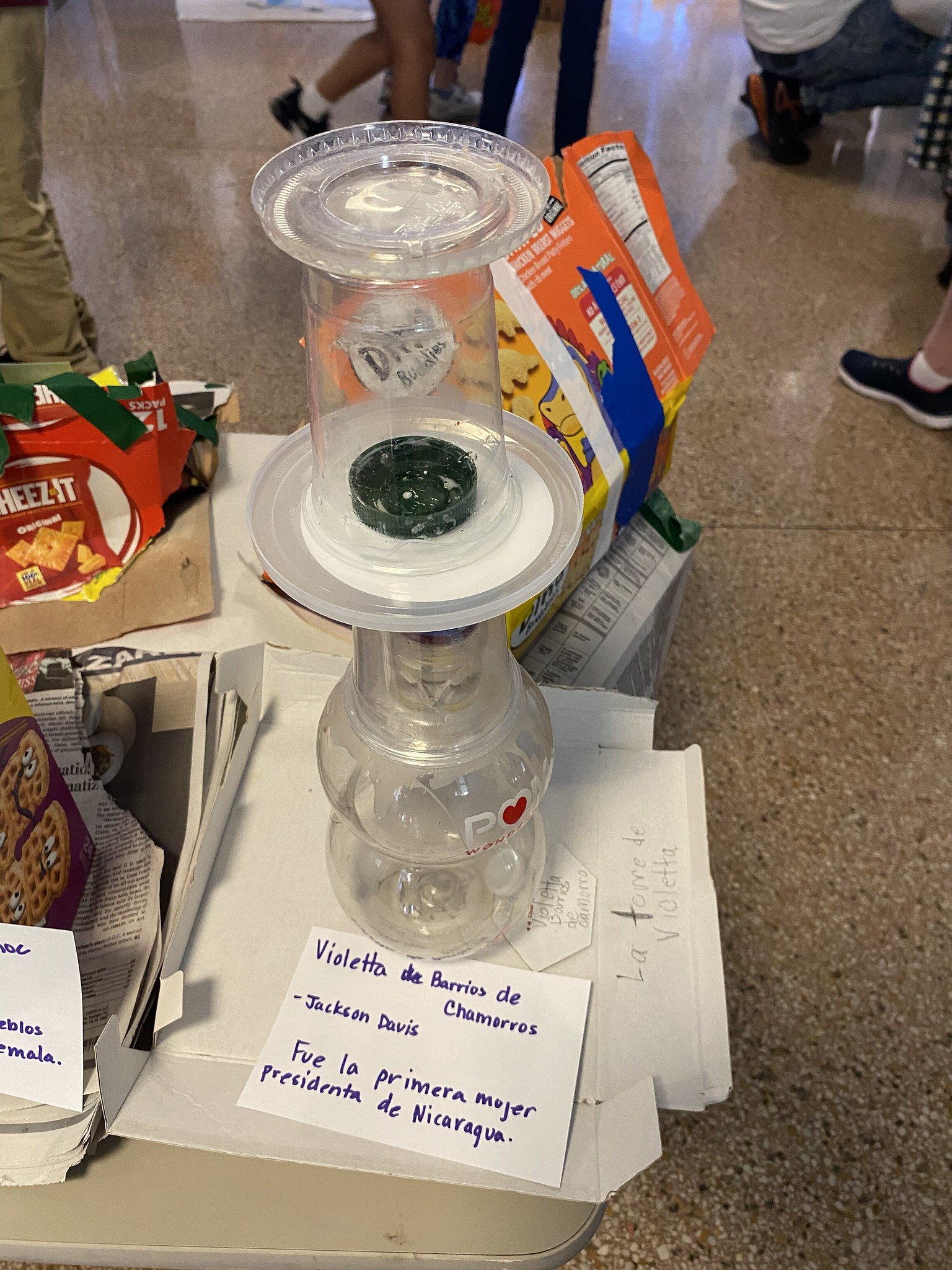Teach Central America Carnival of Learning
We were invited back to the tight-knit community at Bruce-Monroe at Parkview in Washington, D.C. for their annual teach-in style celebration of Central American history and culture.
Upon entrance to the annual carnival of learning and clear through departure, we were wrapped into their fold, enjoying all grade levels schooling us about the many threads of Central American history and culture they had studied so far and how they’ve woven it into their many units of study. Here are just some of the threads:
1619 Project and identity exploration.
Who has a monument, and who deserves a monument?
The parallels between nature’s ecosystems and social support networks.
An interrogation of Columbus and how to uplift Indigenous Peoples’ Day.
The throughline: a celebration of Central American history and culture.
We started with kindergarten, sharing the Central American literature they’ve been reading. They shared what they already knew about the region and facts they learned, including drawings of the national flags of countries in Central America.
Other lower elementary students also focused on Central American literature. They did project-based learning about Mayan embroidery, including reading Rainbow Weaver. They note that embroidery was and still is an important practice in Guatemala, and they designed their own Mayan dresses.
We were present for interactive presentations with the upper elementary grades, specifically third graders who closely studied and grappled with public monuments and memorials to community and historical figures. They offered probing questions about the nature of monuments, including:
What should be the criteria for awarding a public celebration?
Who has a monument?
Who deserves a monument?
Students created small-scale models of monuments to their selected Central American historical figures they felt deserved that recognition. They also made presentations, in both English and Spanish, about the character qualities of their selected monument recipients. One student, who named Rigoberta Menchú as their selected person, noted that she is brave and a peacemaker.
Another student named his sister, a recent graduate of BMPV, as someone he believes deserves a monument because she is great at math (and often helps him with it!) and is kind.
Another palpable thread that is felt every time we visit BMPV is their emphasis on community connectedness. They highlighted science units where students explored naturally occurring ecosystems and drew parallels between these and social support systems. They value all voices in their community. The whole school is partaking in identity exploration via their participation in the 1619 Project with the Pulitzer Center. This aspect of their learning, too, was present throughout the carnaval.
The whole community at Bruce-Monroe — students, faculty and staff, caregivers, and partner organizations — collaborates on this tapestry annually. They host brief teach-ins, put together engaging and informative displays, and wow us with live performances. They pull the many threads of their learning, and they do it seamlessly.
See more photos from the 2023 Teach Central America Carnaval at Bruce-Monroe.
Read about their 2022 Teach Central America Expo.










